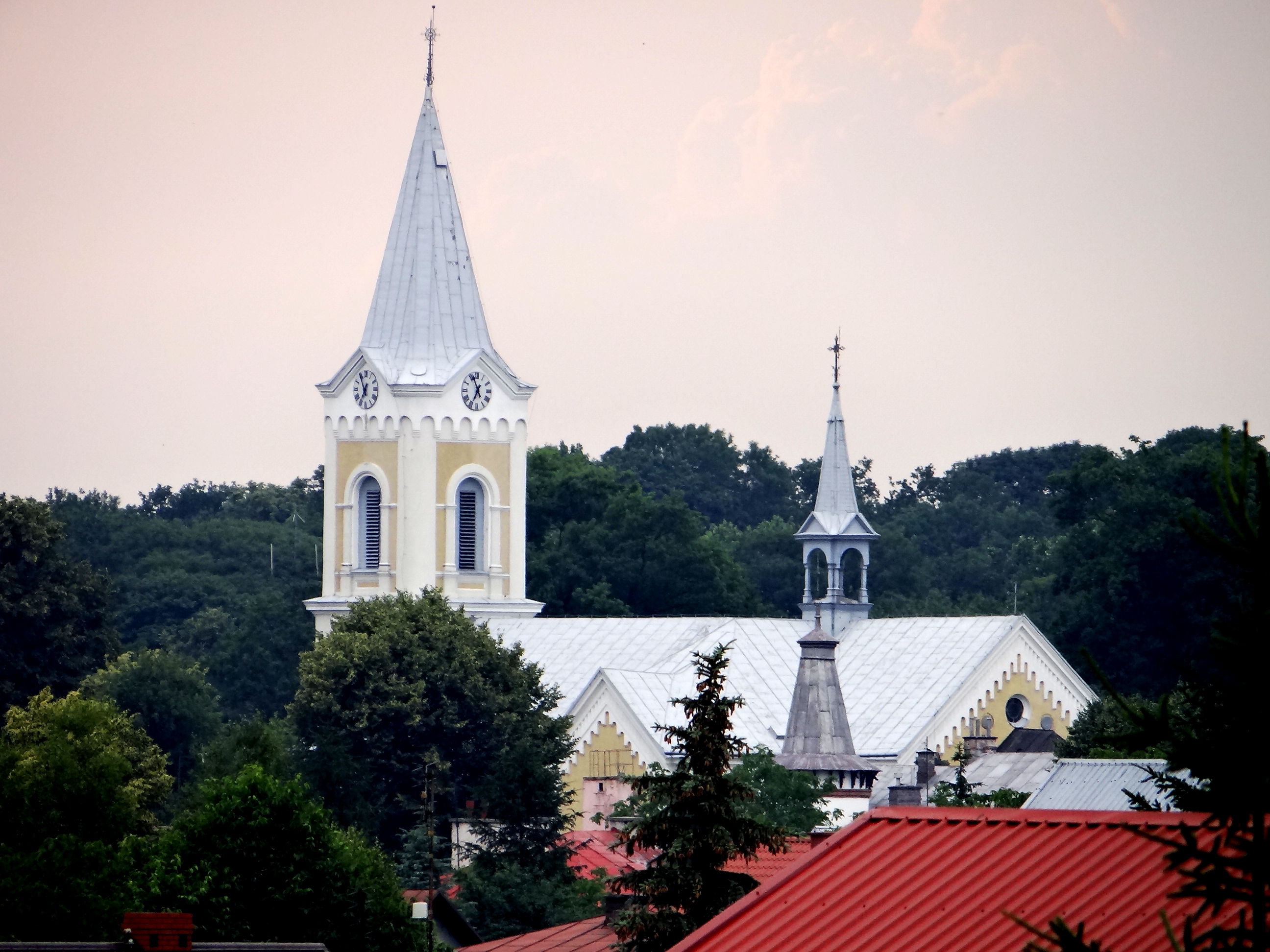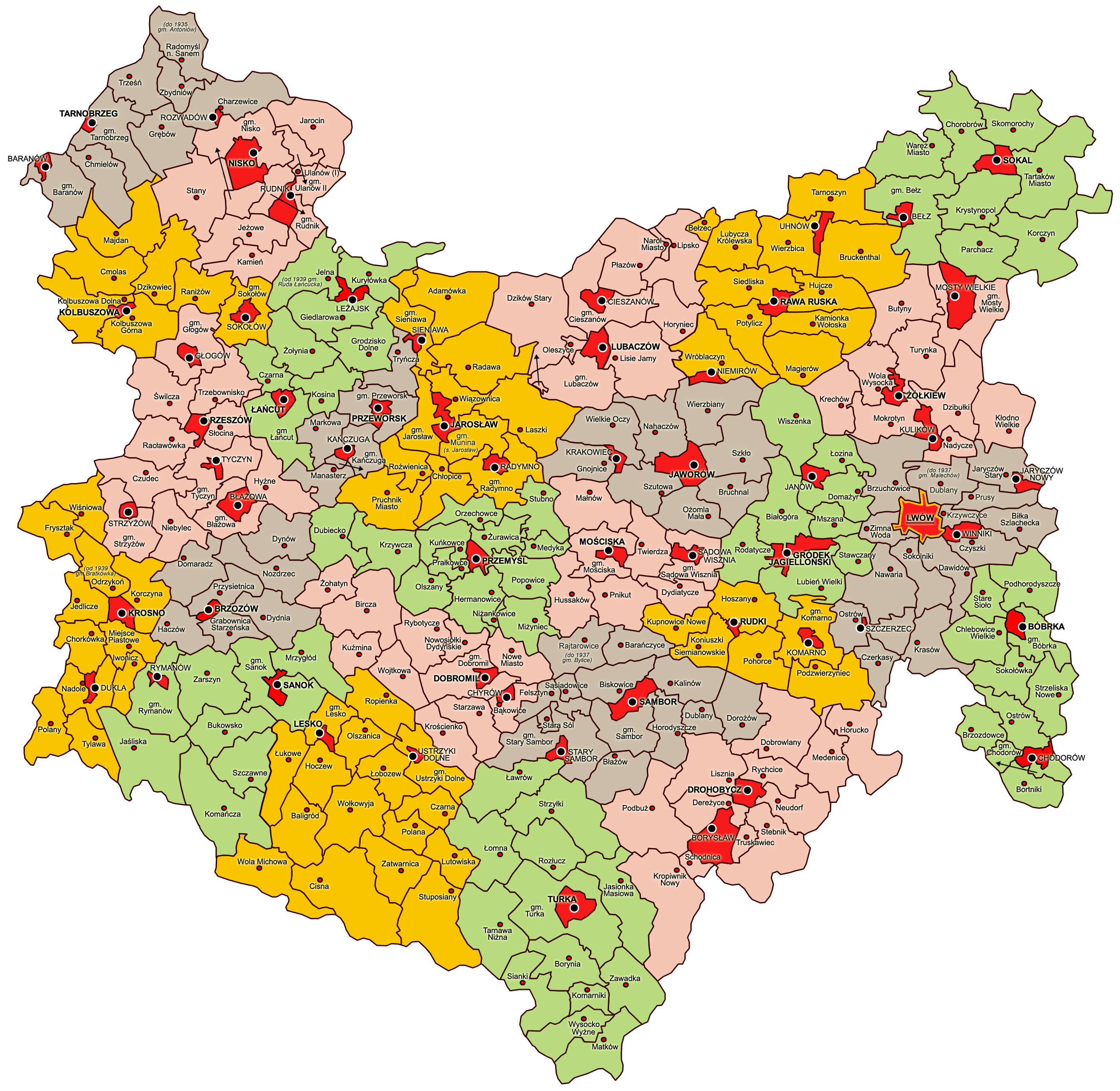|
Stanisław Dąbek
Stanisław Dąbek was a Polish infantry colonel in the Polish Armed Forces (Second Polish Republic), Polish Armed Forces, he was commander of the Marine Brigade of National Defense and acting commander of the Land Defense of the Coast during the Invasion of Poland; posthumously promoted to the rank of brigadier general. Biography Dąbek was born in a peasant family, one of six children in the family of Szczepan Dąbek and Rozalia née Powęska. In 1900 Stanisław's father purchased a farm in Felsendorf. In March 1939, the name of the town was changed to Dąbków. Young Dąbek began his education in Nisko where in the years 1901 to 1905 he attended a 4-grade elementary school. In the following years, he graduated from the 5th and 6th grade of the faculty school in Lubaczów. The next stage of education was studying at the teachers' college in Sokal, which he graduated in 1913 with the secondary school leaving examination. After graduating from the seminary, he worked as a teacher i ... [...More Info...] [...Related Items...] OR: [Wikipedia] [Google] [Baidu] |
Nisko
Nisko is a town in Nisko County, Subcarpathian Voivodeship, Poland on the San River, with a population of 15,534 inhabitants as of 2 June 2009. Together with neighbouring city of Stalowa Wola, Nisko creates a small agglomeration. Nisko has been situated in the Subcarpathian Voivodship since 1999. History Nisko was first mentioned in a document dated 15 April 1439, in which King Władysław III of Varna handed the villages of Nysky, Zaoszicze and Pyelaskowicze to a local nobleman. Furthermore, Nisko was also mentioned by Jan Długosz, in his work ''Liber beneficiorum dioecesis Cracoviensis''. The establishment of the village was probably the result of catastrophic Mongol Invasion of Poland, which decimated the population of Lesser Poland. Residents of burned villages and towns resettled in the areas north of the enormous Sandomierz Forest. Probably in the second half of the 13th century, a village was established on a hill near the San river. Nisko was a royal village administr ... [...More Info...] [...Related Items...] OR: [Wikipedia] [Google] [Baidu] |
World War II
World War II or the Second World War, often abbreviated as WWII or WW2, was a world war that lasted from 1939 to 1945. It involved the vast majority of the world's countries—including all of the great powers—forming two opposing military alliances: the Allies and the Axis powers. World War II was a total war that directly involved more than 100 million personnel from more than 30 countries. The major participants in the war threw their entire economic, industrial, and scientific capabilities behind the war effort, blurring the distinction between civilian and military resources. Aircraft played a major role in the conflict, enabling the strategic bombing of population centres and deploying the only two nuclear weapons ever used in war. World War II was by far the deadliest conflict in human history; it resulted in 70 to 85 million fatalities, mostly among civilians. Tens of millions died due to genocides (including the Holocaust), starvation, ma ... [...More Info...] [...Related Items...] OR: [Wikipedia] [Google] [Baidu] |
Carpathians
The Carpathian Mountains or Carpathians () are a range of mountains forming an arc across Central Europe. Roughly long, it is the third-longest European mountain range after the Ural Mountains, Urals at and the Scandinavian Mountains at . The range stretches from the far eastern Czech Republic (3%) and Austria (1%) in the northwest through Slovakia (21%), Poland (10%), Ukraine (10%), Romania (50%) to Serbia (5%) in the south. "The Carpathians" European Travel Commission, in The Official Travel Portal of Europe, Retrieved 15 November 2016 ... [...More Info...] [...Related Items...] OR: [Wikipedia] [Google] [Baidu] |
Margraviate Of Moravia
The Margraviate of Moravia ( cs, Markrabství moravské; german: Markgrafschaft Mähren) was one of the Lands of the Bohemian Crown within the Holy Roman Empire existing from 1182 to 1918. It was officially administrated by a margrave in cooperation with a provincial diet. It was variously a ''de facto'' independent state, and also subject to the Duchy, later the Kingdom of Bohemia. It comprised the historical region called Moravia, which lies within the present-day Czech Republic. Geography The Margraviate lay east of Bohemia proper, with an area about half that region's size. In the north, the Sudeten Mountains, which extend to the Moravian Gate, formed the border with the Polish Duchy of Silesia, incorporated as a Bohemian crown land upon the 1335 Treaty of Trentschin. In the east and southeast, the western Carpathian Mountains separated it from present-day Slovakia. In the south, the winding Thaya River marked the border with the Duchy of Austria. Moravians, usually conside ... [...More Info...] [...Related Items...] OR: [Wikipedia] [Google] [Baidu] |
Lwów Voivodeship
Lwów Voivodeship ( pl, Województwo lwowskie) was an administrative unit of interwar Poland (1918–1939). Because of the Nazi-Soviet invasion of Poland in accordance with the secret Molotov–Ribbentrop Pact, it became occupied by both the Wehrmacht and the Red Army in September 1939. Following the conquest of Poland however, the Polish underground administration existed there until August 1944. Only around half of the Voivodeship was returned to Poland after the war ended. It was split diagonally just east of Przemyśl; with its eastern half, including Lwów itself, ceded to the Ukrainian SSR at the insistence of Joseph Stalin during the Tehran Conference confirmed (as not negotiable) at the Yalta Conference of 1945.Sylwester Fertacz (2005)"Krojenie mapy Polski: Bolesna granica" (Carving of Poland's map).Magazyn Społeczno-Kulturalny ''Śląsk.'' Retrieved from the Internet Archive on 5 June 2016. Population Voivodeship's capital, the biggest and its most important city was L ... [...More Info...] [...Related Items...] OR: [Wikipedia] [Google] [Baidu] |
Bibrka
Bíbrka ( uk, Бі́брка; pl, Bóbrka; yi, בוברקא, Bubrka) is a city in western Ukraine, located in Lviv Raion of Lviv Oblast (region) about 29 km southeast of Lviv on H09. It hosts the administration of Bibrka urban hromada, one of the hromadas of Ukraine. The population is approximately . The town has been ruled at various points by the Kingdom of Poland, Polish–Lithuanian Commonwealth, the Austrian Empire, the Kingdom of Galicia and Lodomeria, the Russian Empire, Poland, the Soviet Union, and is now part of the Lviv Oblast in Ukraine; as a result Bibrka has several official and native names, including: Bóbrka (Polish/Russian), Prachnik (German), and Boiberik/Boyberke (Yiddish). The city has a population of 3,980. Bibrka was the site of a Soviet prison and detention centre that detained Poles and others in the mid-20th century. History From the first partition of Poland in 1772 until 1918, the town was part of the Austrian monarchy (Austria side after ... [...More Info...] [...Related Items...] OR: [Wikipedia] [Google] [Baidu] |
Sokal
Sokal ( uk, Сокаль, romanized: ''Sokal'') is a city located on the Bug River in Chervonohrad Raion, Lviv Oblast of western Ukraine. It hosts the administration of Sokal urban hromada, one of the hromadas of Ukraine. The population is approximately History The first written mention of Sokal dates from 1377. In 1424, it received Magdeburg rights from Siemowit IV, Duke of Masovia, and in 1462, the town became part of Belz Voivodeship, Lesser Poland Province of the Polish Crown. On August 2, 1519, following the defeat of a Polish-Lithuanian army under Hetman Konstanty Ostrogski by Crimean Tatars, the town was razed by the invaders. Mikolaj Sep-Szarzynski later dedicated one of his poems to this battle. The town remained part of Poland until the first partition of Poland, when it was annexed by the Habsburg Empire, as part of Galicia. It was the capital of the Sokal district, one of the 78 ''Bezirkshauptmannschaften'' in the Austrian Galicia province (Crown land) in 1900 ... [...More Info...] [...Related Items...] OR: [Wikipedia] [Google] [Baidu] |
Lubaczów
Lubaczów ( uk, Любачів ''Liubachiv'') is a town in southeastern Poland, close to the border with Ukraine, with 12,567 inhabitants Situated in the Subcarpathian Voivodeship (since 1999), it is the capital of Lubaczów County and is located northeast of Przemyśl. Other names Lubaczów is also called (or misspelled as): Libatchov, Libechuyv, Liubachev, Lubachov, Lubatchov, Lubichuv, Lubachow, Lubatchow. History Lubaczow was first mentioned in 1214, when, following the Spis Treaty between Duke Leszek I the White and Andrew II of Hungary, the gord was placed under authority of Voivode of Sandomierz, Pakoslaw Lasocic. Until 1376, Lubaczow was spelled Lubacew or Ljubacew. Upon receiving town charter (1376), the spelling of the name was changed into Lubaczow. Until 1462, Lubaczow was governed by the Dukes of Mazovia, a Polish fief. In that year, it was directly annexed into the Kingdom of Poland, as part of the newly created Belz Voivodeship, in which it remained until 1772 ... [...More Info...] [...Related Items...] OR: [Wikipedia] [Google] [Baidu] |
Gazeta Lwowska (1810–1939)
''Gazeta Lwowska'' ( en, Lviv Gazette) is a Polish language biweekly magazine, published since 24 December 1990 in Lviv Ukraine. The publication refers to the traditions of a Polish language paper ''Gazeta Lwowska'', which was published between 1811 and 1944 and as such was one of the oldest Polish newspapers. Originally, ''Gazeta Lwowska'' was a press organ of the Austrian authorities of Galicia and it limited itself to publishing legal announcements. In 1873, when Władysław Łoziński became its editor-in-chief, it began inserting local and world news, and since 1874, it published a monthly addition ''Przewodnik Naukowy i Literacki'' (''Scientific and Literary Guide''), dedicated to history, literature, geography, economics and ethnography. Among writers who cooperated with ''Gazeta Lwowska'', there were Adam Krechowiecki, Ludwik Kubala, Karol Szajnocha, Józef Szujski, Alfred Wysocki, Walery Łoziński. After 1918, when Lemberg was incorporated into the Second Polish R ... [...More Info...] [...Related Items...] OR: [Wikipedia] [Google] [Baidu] |
Dąbków
Dąbków is a village in the administrative district of Gmina Lubaczów, within Lubaczów County, Subcarpathian Voivodeship, in south-eastern Poland, close to the border with Ukraine. It lies approximately south of Lubaczów and east of the regional capital Rzeszów Rzeszów ( , ; la, Resovia; yi, ריישא ''Raisha'')) is the largest city in southeastern Poland. It is located on both sides of the Wisłok River in the heartland of the Sandomierz Basin. Rzeszów has been the capital of the Subcarpathian Vo .... References Villages in Lubaczów County {{Lubaczów-geo-stub ... [...More Info...] [...Related Items...] OR: [Wikipedia] [Google] [Baidu] |




